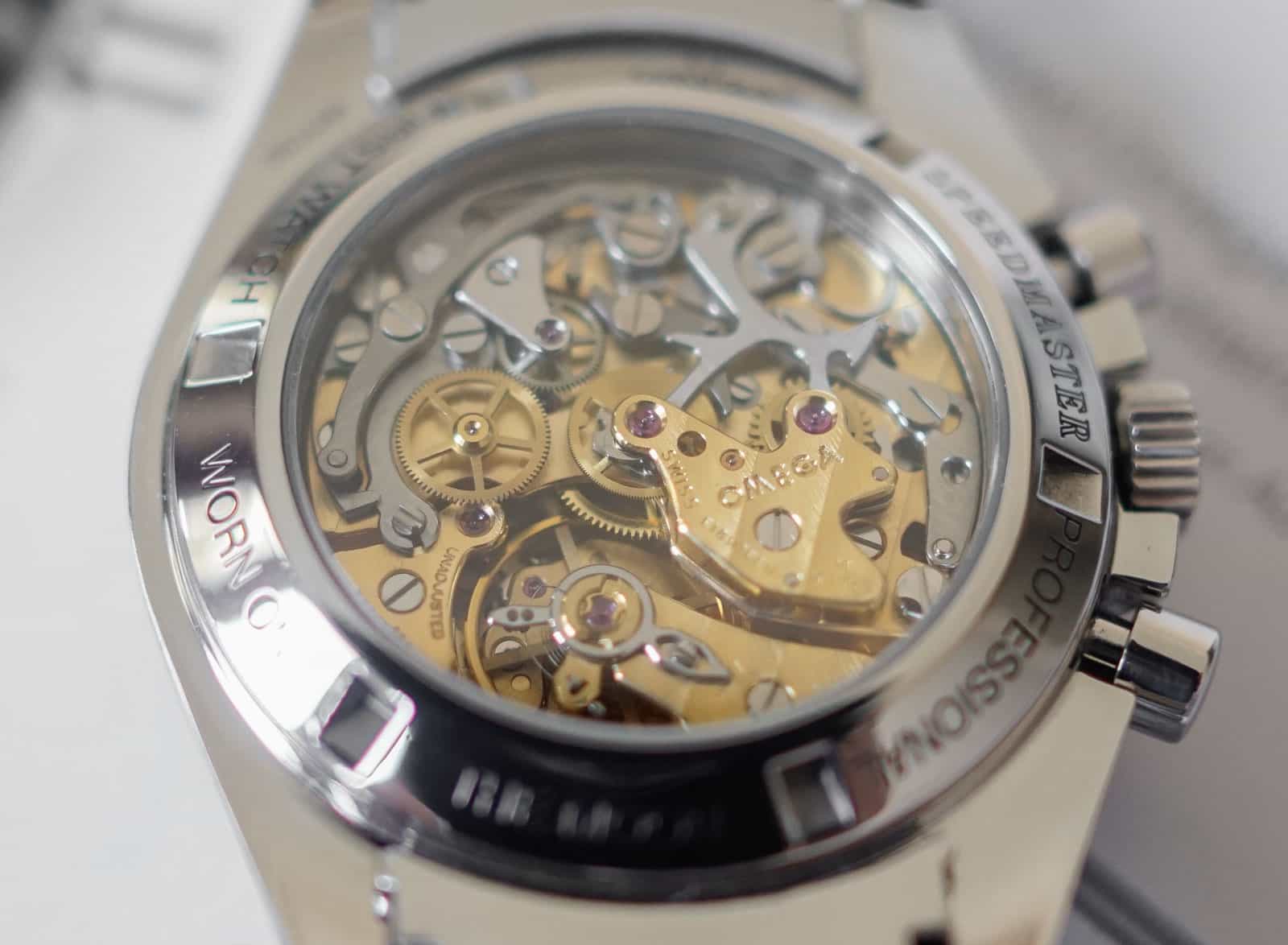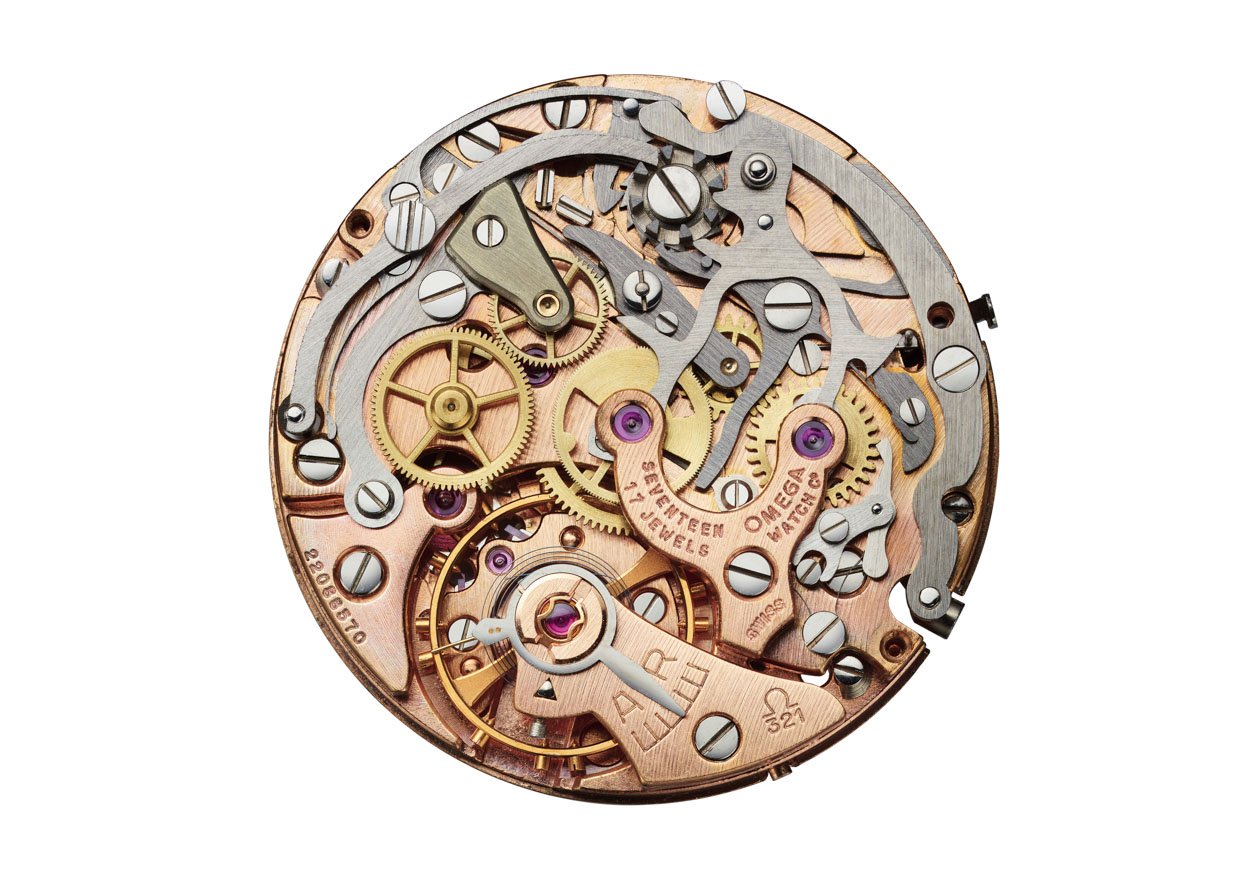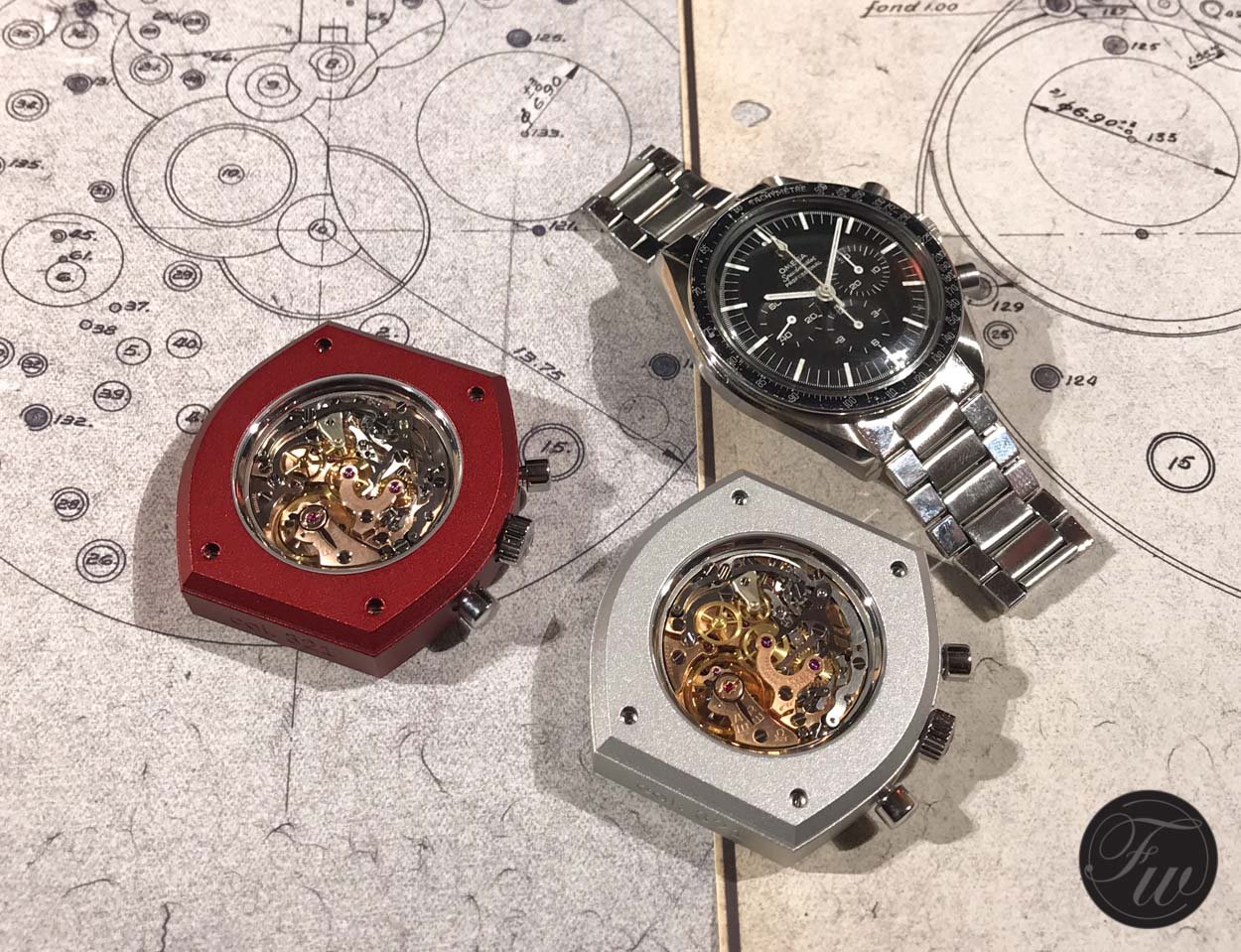Watches & Pencils #45 – Speedy Delivery Of The Caliber 321
In the presence of a small part of the #SpeedyTuesday community, Omega’s CEO Raynald Aeschlimann announced the return of the historical chronograph caliber 321 movement. A dream come true for many Speedmaster enthusiasts, as this is the movement many of them are after when searching for that grail Speedmaster.
Caliber 321
It broke all loose on social media channels, including the Speedy Tuesday group on Facebook that talks Speedmasters all day long. Of course, there’s also the group of people that are more into modern watches and were having a hard time understanding of what was going on as this movement isn’t exactly a fast ticker, or a Master Chronometer certified watch, let alone being equipped with silicon parts. But for the die-hard Speedmaster fans it marks an important point in time. The caliber 321 was not only the Lémania based movement with a column-wheel mechanism instead of the later cam mechanism (we explained the difference in our chronograph 101 article here), it was also the movement inside the Speedmasters that were used and worn on the Moon. The references 105.003, 105.012 (Apollo XI) and 145.012. Only in 1978, the successor caliber 861 (also Lémania based) was qualified for use by astronauts during EVA.
Where the Valjoux 72 based watches (Rolex 6238 and Longines-Wittnauer 235T) miserably failed during the severe NASA test procedures (watch the last video in this article), the Speedmaster 105.003 with caliber 321 passed and got its ticket to the Moon.
And because of that, and the new caliber 321 introduced, I decided to create something special for today:

For me, the re-introduction of the caliber 321 movement brings bring back memories of the race to the Moon and the Speedmasters that travelled with the astronauts on the 20th of July in 1969. Although the caliber 321 movement was also used in other watches like the Seamaster series, it was the Speedmaster that made this movement iconic.
History adds value and experience
Omega used the Speedmaster 105.003 of astronaut Gene Cernan for the ‘new’ 321 movements. An interesting and smart choice in my opinion. It refers to interesting stories and adds a spark to the process of creating the 321 movements. While some people might think they are not affected by stories, they are wrong. Yes, one might be easier to influence than the other person, but in the end, we all like a good story. For example, in my daily job as a designer I use story telling instead of plain reports or benchmarks with loads of boring text to convince stakeholders or prospects.
Compare a watch with a story with a watch without it. A watch with a TRUE story is always a plus and keeps the watch crowd talking about the watch. The Speedmaster is a perfect example of this.

Astronauts and their stories like Gene Cernan made the Speedmaster a true icon.
Nobody needs an exhibition caseback in Space. But I do!
I call myself mostly a purist and minimalist. I’d like to keep things as original as they are, based on the first Speedmasters. But, for a future Speedmaster with a caliber 321 movement this might change. I own a pre-moon Speedmaster (reference 145.012-67) and did see the movement only a few times. I’d like to keep this one as original as it is, but I would love to see an exhibition case back on a future acquisition. To watch the beautiful new movement and all its unique parts. For example, the lovely column-wheel mechanism. Although we’ve been told that the first watches with the new caliber 321 are probably going to be in precious metal and without exhibition caseback, let’s hope for something transparent in steel.

A Speedmaster with an exhibition case back (caliber 863, reference 3592.50). NASA might never certified an Omega Speedmaster with an open case back, but for the new 321 movement I do not care
Movement design
While the top priority with movement design is probably functional design, I do love it when the designers put some effort in the aesthetics. While the caliber 321 movement is mostly praised because of its functionality and tank build robustness, I would like to point out some design highlights I like about the movement. For example, most of the bridges all are curved beautifully. Almost no hard corners. The informative text and branding is subtle and follows the shape of the part that it is engraved on. And then there is that striking warm color palette of copper, grey, gold and ruby colors. For the new caliber 321 movement Omega uses a PVD coating of Sedna gold to keep the copper looking parts more fresh and vibrant for a longer period of time (the old 321 movements were made of copper plated parts that would look less nice after time). Are there no negatives? Yes, there are. One of the things that I would love to see improved on the movement would be the Omega logo (look at the picture below at the bottom). It still has the basic Omega-logo shape, but it would be nicer to have the stroke width variation included. Also, to make it match the rest of the logos on the watch. With modern technique, this should be possible to engrave it with more precision.

The new caliber 321 movement by Omega
The fire is on
For me, Omega’s announcement set my Speedmaster heart ‘on fire’. It are these things that keeps the watch passion interesting. Let’s hope a ‘speedy’ delivery of the new caliber 321 movements!
Below, the new (left) and old caliber 321 (right) in special casing, and a 145.012-67 with caliber 321.


